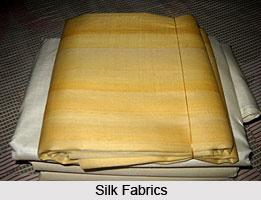 The economy of Murshidabad is fundamentally agrarian. The lack of economically important minerals and proper infrastructure is a hindrance to the growth of industries in Murshidabad. Hence agriculture, supplemented by the cottage industries shaped the economic scenario of Murshidabad.
The economy of Murshidabad is fundamentally agrarian. The lack of economically important minerals and proper infrastructure is a hindrance to the growth of industries in Murshidabad. Hence agriculture, supplemented by the cottage industries shaped the economic scenario of Murshidabad.
The triangular tract of Murshidabad presents regional homogeneity and is provided by ample water of the Ganges and its tributaries, which favorably helped the agriculture to thrive, thereby supporting the economy greatly. The yield per hectares of land in respect of rice, wheat and fibers are respectively 1124 kgs, 2007 kgs and 1540 bales. Apart from this, horticulture also provides a considerable section of the economy of Murshidabad. The production of sugarcane and potato were 7375 kgs and 14826 kgs per hectare. After being a proper utilization of the agricultural products, the ample quantity of surplus is exported to the neighboring districts. Agriculture, being the principal source of the income of Murshidabad, supports the economy dually.
The agriculture in Murshidabad is supplemented by the cottage industries, which shares an equal importance in the economy of Murshidabad. However the silk weaving industry constituted to be the principal cottage industry in Murshidabad. The raw silk weaving has been growing prominently since the pre - historic times. However the silk industry in West Bengal is concentrated in Murshidabad. The brand "Murshidabad silk" is not only famous across India, but also has a great demand throughout the world. Sericulture industry is the principal agro-based rural industry in Murshidabad.
The livestock of cows, goats and buffaloes served the rural economy of Murshidabad.
Ivory carving is another industry of Murshidabad, which supports its economy. The ivory industry in Murshidabad is the only one of its kind in West Bengal. The other small-scale industries like the bell metal and brass utensils, carpentry, earthenware making, smithy, and pottery and bidi-making etc. served the rural economy.
The major trade in the Murshidabad is the silk fabrics. The ivory trading is also an important source of income of Murshidabad. About 99% of total production of ivory is exported, which draws a significant amount of Murshidabad`s income. The entire jute products are exported to the mills throughout the country. Among other things onions, pulses, oilseeds and vegetables constitute the main item of export. The handloom items and the woolen garments are the important items, which are being exported.
However, the economy of Murshidabad is mainly supported by the export of the surplus agricultural products and silk, ivory and vegetables.






